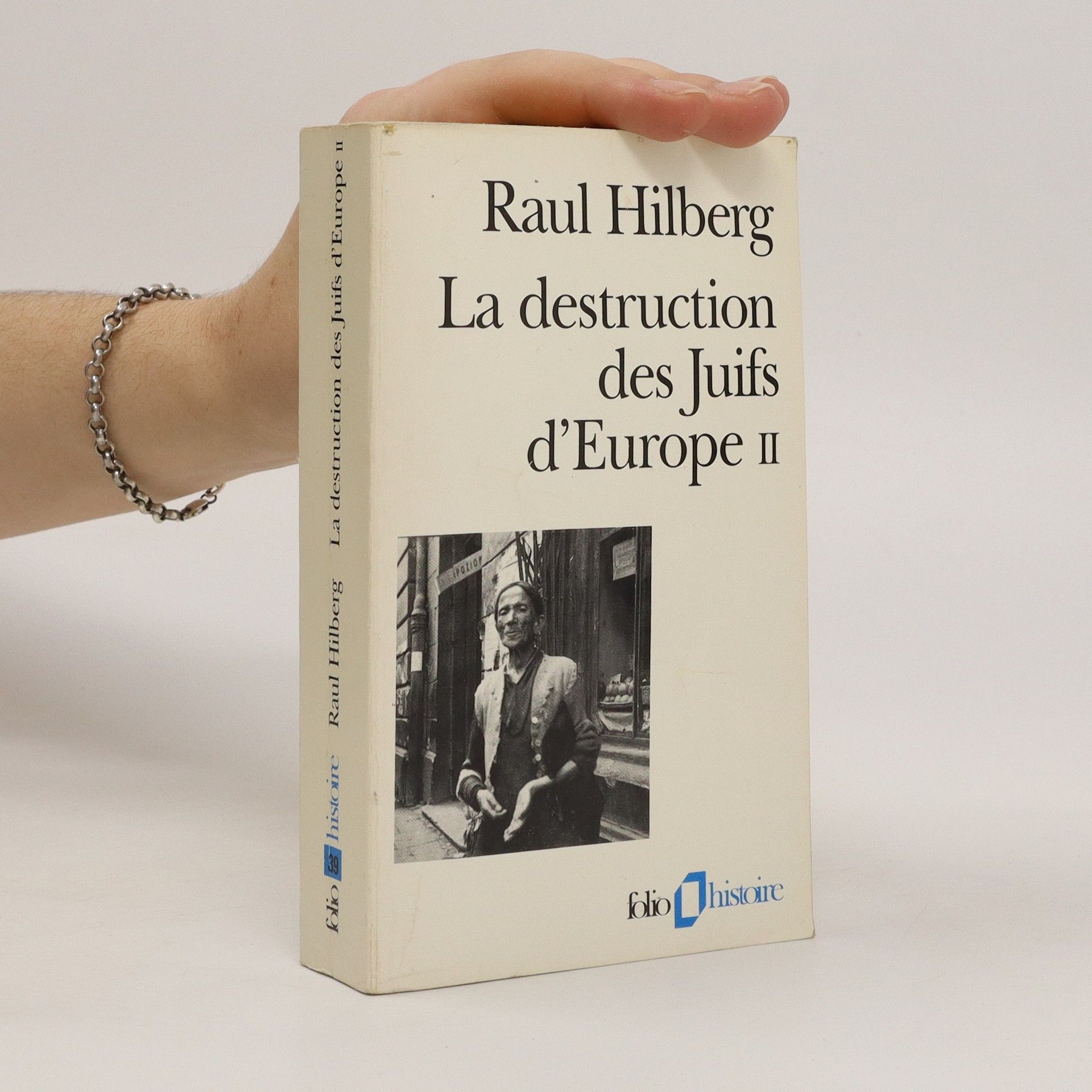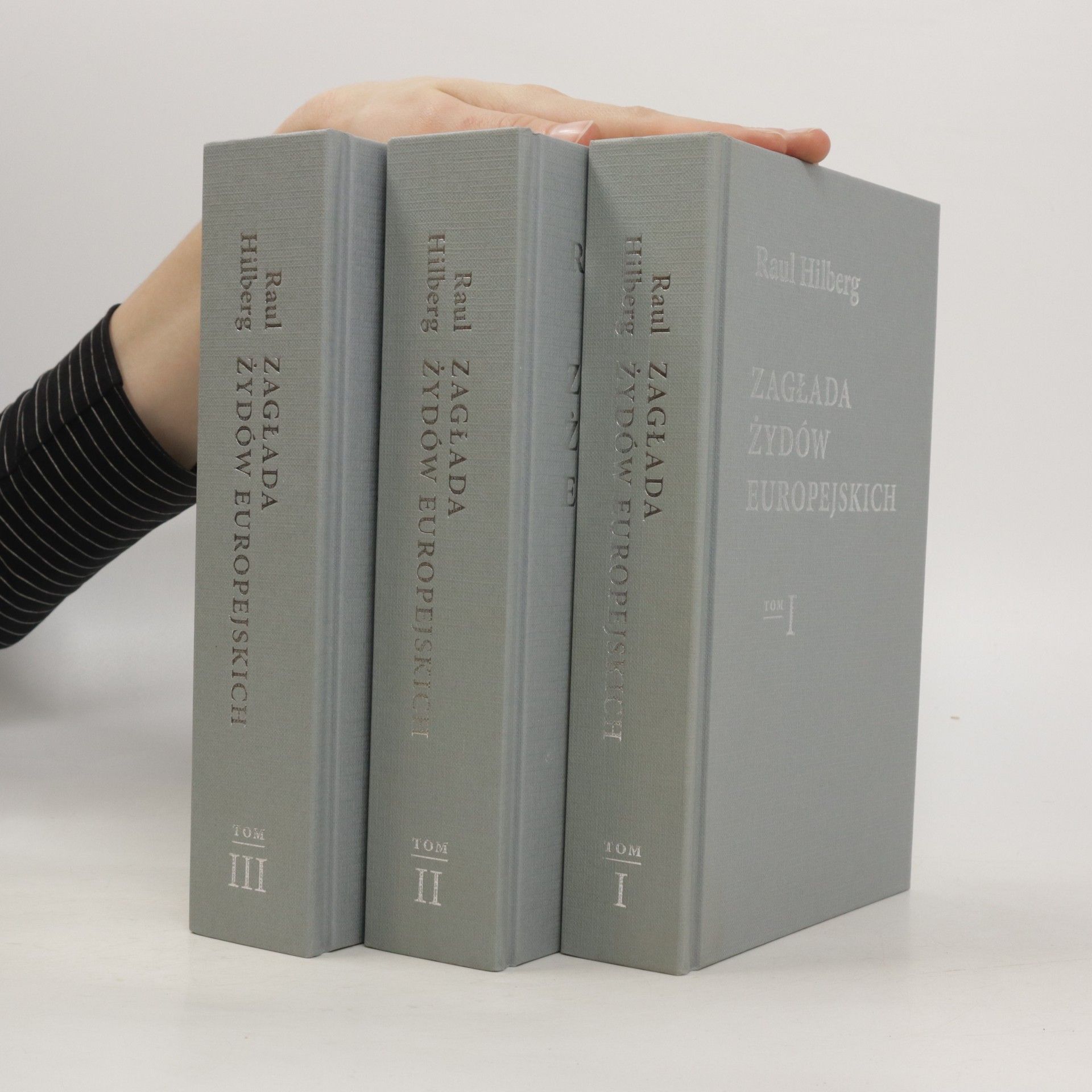L'idea di sterminare gli Ebrei prese corpo in un lontano passato, tanto che se ne può rintracciare un'allusione nella famosa omelia di Lutero contro i Giudei. Ma è solo con la formazione del Terzo Reich che la suggestione di una distruzione totale si insinuò sempre piu in tutta la società tedesca, assumendo una forma più definita. Inesorabilmente, si formò una macchina destinata a condurre a buon fine losterminio, costituita da un dispiegamento di uffici militari e civili, centrali e periferici, all'interno dei quali ogni impiegato e funzionario, rispettando le proprie responsabilità, si adoperò a definire, classificare, trasportare, sfruttare e assassinare milioni di vittime innocenti, e tutto come se nulla distinguesse la soluzione finale dagli affari correnti. La ricerca di Raul Hilberg, cominciata nel lontano 1948 e tuttora in corso, è basata su un'enorme mole di documenti degli apparati nazisti, e ci conduce a esplorare il meccanismo della distruzione nei più minuti dettagli. Pagina dopo pagina, La distruzione degli Ebrei d'Europa ci consegna la storia fedele di un'epoca senza precedenti, e ricostruisce gli intrecci complessi che hanno reso possibile ciò che ancor oggi ci sembra lontano da ogni immaginazione.
Raul Hilberg Libri
Raul Hilberg è stato uno scienziato politico e storico austriaco naturalizzato americano, ampiamente considerato il massimo studioso mondiale dell'Olocausto. La sua opera monumentale è considerata uno studio fondamentale della "Soluzione Finale" nazista, che esamina meticolosamente la natura sistematica dell'annientamento degli ebrei europei. L'approccio di Hilberg è stato caratterizzato da un rigoroso dettaglio e un'analisi approfondita, rendendo la sua erudizione un contributo essenziale alla comprensione di questa tragica epoca. La sua ricerca svela le complessità burocratiche e i meccanismi che hanno permesso l'esecuzione del genocidio.







L'olocausto: una delle pagine più esecrande della storia dell'umanità rivive in questo saggio-denuncia attraverso le testimonianze dei protagonisti, siano stati essi vittime o aguzzini, rese note dopo anni di ricerche dal più attendibile studioso della materia.
Historian Raul Hilberg produced a variety of archival research, personal essays, and other works over a career that spanned half a century. This book collects some of Hilberg's most essential and groundbreaking writings-many of them published in obscure journals or otherwise inaccessible to nonspecialists-in a single volume.
Sources of Holocaust research
- 224pagine
- 8 ore di lettura
Since the publication of his monumental Destruction of the European Jews forty years ago, Raul Hilberg has been the acknowledged master of Holocaust historians. In Sources of Holocaust Research he distills a lifetime of scholarly investigation into an indispensable primer on the use of sources in the writing of Holocaust history. "It is not a manual or epistemological treatise," Mr. Hilberg advises, "but an analysis of the types of materials, their composition, style, content, and usability." He goes on to describe, first, the "exterior" examination and classification of sources; next the "interior" view―the configuration, characteristic style, and highly selective content of the sources; and, finally, what may be extracted from them, considering the intrinsic problems of the material itself and the "external conditions." Throughout Mr. Hilberg makes use of a rich fund of examples and anecdotes to illustrate his principles. The result is a book that anyone seriously interested in Holocaust research must have.
Even after thirty-five years, Raul Hilberg's The Destruction of the European Jews remains the most comprehensive analysis of the Nazi destruction process. Yet at the time it was written, as Mr. Hilberg relates in The Politics of Memory, both the manuscript and its subject matter were refused by major publishers and university presses. When at last his monumental study was published, to extraordinary acclaim, the author found himself facing a hostile reception from those
Die dreibändige Reihe von Raul Hilberg bietet eine umfassende Analyse der systematischen Vernichtung der europäischen Juden während des Zweiten Weltkriegs. Hilberg untersucht detailliert die bürokratischen, wirtschaftlichen und sozialen Strukturen, die zur Durchführung des Holocaust führten. Der erste Band befasst sich mit der Vorgeschichte und den ideologischen Grundlagen des Antisemitismus, während der zweite Band die Mechanismen der Umsetzung der Vernichtungspolitik, einschließlich der Rolle staatlicher Institutionen und der Zusammenarbeit verschiedener Akteure, behandelt. Der dritte Band analysiert die Konsequenzen und die Nachwirkungen der Vernichtung, einschließlich der Herausforderungen der Nachkriegszeit und der Erinnerungskultur. Hilberg stützt sich auf umfangreiche Quellen und Dokumente, um die Komplexität und die Dimensionen des Holocaust zu beleuchten. Die Themen der Verantwortung, der Täter und der Opfer sowie die Rolle der Gesellschaft werden eingehend behandelt. Diese Arbeit ist ein bedeutender Beitrag zur Geschichtswissenschaft und bietet einen tiefen Einblick in die Mechanismen des Genozids und die Auswirkungen auf die jüdische Gemeinschaft in Europa. Die detaillierte Untersuchung der historischen Fakten und die kritische Reflexion über die moralischen Implikationen machen diese Reihe zu einer wichtigen Quelle für das Verständnis des Holocaust.
La destruction des Juifs d'Europe II
- 1098pagine
- 39 ore di lettura
L'ouvrage au titre terrible de Raul Hilberg est l'oeuvre de toute une vie. Pendant trente-six ans, l'auteur a sondé les centres d'archives de l'Europe entière afin de répondre à une question : comment cet événement sans précédent qui eut pour résultat le meurtre de plus de cinq millions de personnes a-t-il pu avoir lieu ? Refusant de s'en tenir au seul constat d'une catastrophe morale, Hilberg analyse minutieusement les étapes qui, de la définition des Juifs par l'administration allemande des années trente à la Solution finale, ont jalonné le processus de destruction. Par un traitement exhaustif des sources disponibles, l'auteur apporte patiemment la preuve que rien n'a été laissé au hasard dans l'organisation du système criminel des nazis. À l'appui de cette thèse, les décrets et notes de service du IIIe Reich prouvent le caractère méthodique de l'opération. La conclusion est implacable. Faut-il préciser que l'ouvrage est devenu la référence sur le sujet ? --Stéphane Pares
Książka Raula Hilberga to obszerne, liczące niemal 1700 stron studium Zagłady Żydów europejskich. Pierwsze wydanie książki ukazało w 1961, drugie w 1985, trzecie w 2003 r.. wydanie polskie poszerzone jest o poprawki autora, które tworzył do ostatnich chwil życia, spędzając nad nią ponad 50 lat życia. Jest to precyzyjny, szczegółowy i doskonale uporządkowany obraz zagłady społeczności żydowskiej w Europie dokonanej przez działające w III Rzeszy struktury hierarchiczne: partię nazistowską, biznes, administrację i armię, tworzące razem maszynerię Zagłady.
Sonderzüge nach Auschwitz
The Role of the German Railroads in the Destruction of the Jews
„Daß die Eisenbahn über dieses Kapitel ihrer Geschichte gern schweigt ist kein Einzelfall, hat aber, wie Hilberg schreibt, gute Gründe. Deswegen ist dieses Buch so verdienstvoll. Hier kann man einmal im einzelnen sehen, wie der Vernichtungsapparat funktionierte, und vielleicht sogar erkennen, wie er möglich wurde. Deswegen haben die Leser einen Anspruch auf ein solches Buch, und deswegen verdient es viele Leser“ so der Stuttgarter Historiker Eberhard Jäckel im „Jahrbuch für Eisenbahnliteratur“ 1985.


